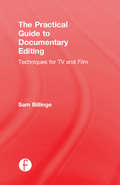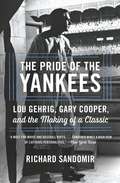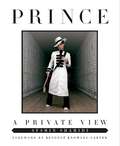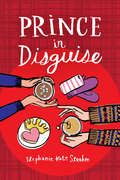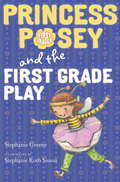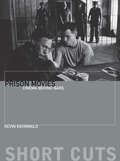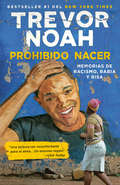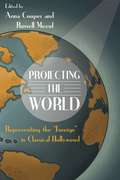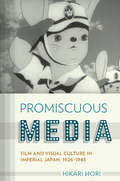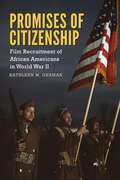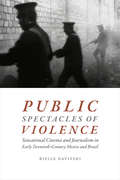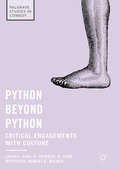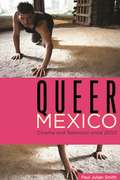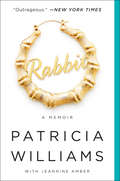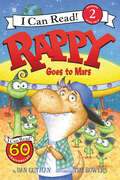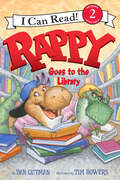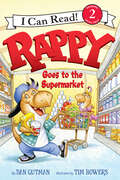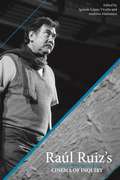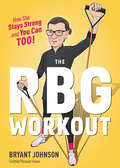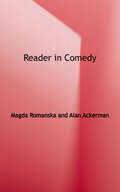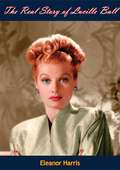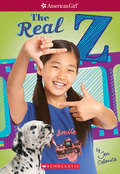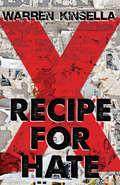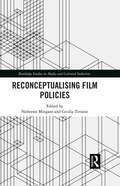- Table View
- List View
The Practical Guide to Documentary Editing: Techniques for TV and Film
by Sam BillingeThe Practical Guide to Documentary Editing sets out the techniques, the systems and the craft required to edit compelling professional documentary television and film. Working stage by stage through the postproduction process, author Sam Billinge explores project organization, assembling rushes, sequence editing, story structure, music and sound design, and the defining relationship between editor and director. Written by a working documentary editor with over a decade’s worth of experience cutting films for major British and international broadcasters, The Practical Guide to Documentary Editing offers a unique introduction to the craft of documentary editing, and provides working and aspiring editors with the tools to master their craft in the innovative and fast-paced world of contemporary nonfiction television and film.
The Pride of the Yankees: Lou Gehrig, Gary Cooper, and the Making of a Classic
by Richard SandomirOn July 4, 1939, Gehrig delivered what has been called "baseball's Gettysburg Address" at Yankee Stadium. There is, for now, no known, intact film of Gehrig's speech, but instead, just a swatch of the newsreel footage has survived, incorporating his opening and closing remarks: "For the past two weeks you have been reading about the bad break I got. Yet today I consider myself the luckiest man on the face of this earth," the last line, of course, having become one of the most famous, invoked, and inspiring, ever, anywhere. The New York Times account, the following day, called it "one of the most touching scenes ever witnessed on a ball field", that made even hard-boiled reporters "swallow hard." The scene and the story would likely have been largely lost to history, altogether, were it not for the film, Pride of the Yankees, best known for Gary Cooper, as the dying Lou Gehrig, movingly describing himself as "the luckiest man on the face of the earth," even as his body was being ravaged by the disease that was soon named after him. Here, now, in THE PRIDE OF THE YANKEES: Lou Gehrig, Gary Cooper, and the Making of a Classic by Richard Sandomir, New York Times sports columnist, is, for the first time, the full story behind the pioneering, seminal movie. Filled with larger than life characters and unexpected facts, Iron Hero shows us how Samuel Goldwyn had no desire to making a baseball film but he was persuaded to make a quick deal with Lou's widow, Eleanor, not long after Gehrig had passed; Hollywood icon Cooper had zero knowledge of baseball and had to be taught to play; unknown parts of the screen treatment and screenplay that will be written about for the first time; and dishy letters to Eleanor from Christy Walsh, the pioneering business manager who represented the Gehrigs, from the Los Angeles set. Nostalgic, breezy and fun, THE PRIDE OF THE YANKEES captures a lost time in film and sports history.
Prince: A Private View
by Afshin Shahidi Beyoncé Knowles-Carter<P>Featuring a foreword by Beyoncé Knowles-Carter. <P>When Prince wanted to document his One Nite Alone tour in 2002, he turned to Afshin Shahidi. Again in 2004, he went along on Prince’s record breaking Musicology Tour. Afshin met Prince in 1989 and became his cinematographer and later his photographer. He was the photographer closest to Prince for the last fifteen years of Prince’s life. <P>Afshin is the only photographer to shoot the legendary 3121 private parties in Los Angeles that became the most sought after invitations in Hollywood. <P>Prince: A Private View compiles his work into a journey through Prince's extraordinary life. With many never-before-seen photos, this is the ultimate collection of – some intimate, some candid, some in concert – shots of Prince, but all are carefully directed in the artist-as-art style that we associate with him. <P>Deep photo captions are brief, but complete stories about Prince's life at that moment - some are incisive, others are personal and even funny. <P><b>A New York Times Bestseller</b>
Prince in Disguise
by Stephanie Kate StrohmSomeday I want to live in a place where I never hear "You're Dusty's sister?" ever again. Life is real enough for Dylan-especially as the ordinary younger sister of Dusty, former Miss Mississippi and the most perfect, popular girl in Tupelo. But when Dusty wins the hand of the handsome Scottish laird-to-be Ronan on the TRC television network's crown jewel, Prince in Disguise, Dylan has to face a different kind of reality: reality TV.As the camera crew whisks them off to Scotland to film the lead-up to the wedding, camera-shy Dylan is front and center as Dusty's maid of honor. The producers are full of surprises-including old family secrets, long-lost relatives, and a hostile future mother-in-law who thinks Dusty and Dylan's family isn't good enough for her only son. At least there's Jamie, an adorably bookish groomsman who might just be the perfect antidote to all Dylan's stress . . . if she just can keep TRC from turning her into the next reality show sensation.
Princess Posey and the First Grade Play
by Stephanie Greene Stephanie Roth SissonEveryone's favorite first grader, Princess Posey, has to fess up to her biggest mistake yet in this eleventh book in the series!Posey's class has been learning all about bees, and when they plan to put on a play to demonstrate everything they've learned, Posey is thrilled. Posey loves a stage, and she's already got her heart set on the perfect role: the Queen Bee. But when Caitlyn is picked for the Queen Bee, Posey is crushed. Taking matters into her own hands, Posey swipes Caitlyn's special bee eraser when nobody's looking. But after she takes it, she feels worse. Maybe stealing wasn't the right thing to do--but how can she ever make things right? It takes a talk with her mom and a whole lot of courage, but Posey makes an important discovery: owning up to your mistakes is always the right thing to do.Praise for Posey:"Greene doesn't miss a step. Posey is the perfect fictional friend for any first-grade girl."—Kirkus Reviews"Greene's simple writing style and straightforward plot is ideal for advanced first graders or beginning second-grade readers."—School Library Journal
Prison Movies: Cinema Behind Bars (Short Cuts)
by Kevin KehrwaldPrison Movies: Cinema Behind Bars traces the public fascination with incarceration from the silent era to the present. Often considered an offshoot of the gangster film, the prison film precedes the gangster film and is in many ways its opposite. Rather than focusing on tragic figures heading for a fall, the prison film focuses on fallen characters seeking redemption. The gangster's perverse pursuit of the American dream is irrelevant to the prisoner for whom that dream has already failed. At their core, prison films are about self-preservation at the hands of oppressive authority. Like history itself, prison films display long stretches of idleness punctuated by eruptions of violence, dangerous moments that signify liberation and the potential for change. The enclosed world of the prison is a highly effective microcosm, one that forces characters and audiences alike to confront vexing issues of race, class, gender, and sexuality. These portrayals of men and women behind bars have thrived because they deal with such fundamental human themes as freedom, individuality, power, justice, and mercy.Films examined include The Big House (1930), I Want to Live! (1958), The Defiant Ones (1958), Cool Hand Luke (1967), Midnight Express (1978), Escape from Alcatraz (1979), The Shawshank Redemption (1994), and Starred Up (2013).
Prohibido nacer: Memorias de racismo, rabia y risa.
by Trevor NoahMÁS DE UN MILLÓN DE EJEMPLARES VENDIDOS NOMBRADO UNO DE LOS MEJORES LIBROS DEL AÑO POR Michiko Kakutani, New York Times • USA Today • San Francisco Chronicle • NPR • Esquire • Newsday • Booklist La impresionante trayectoria de Trevor Noah, desde su infancia en Sudáfrica durante el apartheid hasta el escritorio de The Daily Show, comenzó con un acto criminal: su nacimiento. Trevor nació de un padre suizo blanco y una madre Xhosa negra, en una época de la historia sudafricana en que tal unión era castigada con cinco años de prisión. Como prueba viviente de la indiscreción de sus padres, Trevor permaneció los primeros años de su vida bajo el estricto resguardo de su madre, quien se veía obligada a tomar medidas extremas —y, a veces, absurdas— para ocultar a Trevor de un gobierno que podría, en cualquier momento, llevárselo. Prohibido nacer es la historia de un niño travieso que se convierte en un joven inquieto mientras lucha por encontrarse a sí mismo en un mundo en el que nunca se suponía que debía existir. También es la historia de la relación de ese joven con su intrépida, rebelde y ferviente madre religiosa: su compañera de equipo, una mujer decidida a salvar a su hijo del ciclo de pobreza, violencia y abuso que en última instancia amenazaría su propia vida.
Prohibido nacer: Memorias De Racismo, Rabia Y Risa
by Trevor NoahMÁS DE UN MILLÓN DE EJEMPLARES VENDIDOS NOMBRADO UNO DE LOS MEJORES LIBROS DEL AÑO POR Michiko Kakutani, New York Times USA Today San Francisco Chronicle NPR Esquire Newsday Booklist La impresionante trayectoria de Trevor Noah, desde su infancia en Sudáfrica durante el apartheid hasta el escritorio de The Daily Show, comenzó con un acto criminal: su nacimiento. Trevor nació de un padre suizo blanco y una madre Xhosa negra, en una época de la historia sudafricana en que tal unión era castigada con cinco años de prisión. Como prueba viviente de la indiscreción de sus padres, Trevor permaneció los primeros años de su vida bajo el estricto resguardo de su madre, quien se veía obligada a tomar medidas extremas y, a veces, absurdas para ocultar a Trevor de un gobierno que podría, en cualquier momento, llevárselo. Prohibido nacer es la historia de un niño travieso que se convierte en un joven inquieto mientras lucha por encontrarse a sí mismo en un mundo enel que nunca se suponía que debía existir. También es la historia de la relación de ese joven con su intrépida, rebelde y ferviente madre religiosa: su compañera de equipo, una mujer decidida a salvar a su hijo del ciclo de pobreza, violencia y abuso que en última instancia amenazaría su propia vida.
Projecting the World: Representing the "Foreign" in Classical Hollywood
by Anna Cooper Russell MeeufThe classical Hollywood films that were released between the 1930s and 1960s were some of the most famous products of global trade, crisscrossing borders and rising to international dominance. In analyzing a series of Hollywood films that illustrate moments of nuanced transnational engagement with the “foreign,” Projecting the World: Representing the “Foreign” in Classical Hollywood enriches our understanding of mid-twentieth-century Hollywood cinema as a locus of imaginative geographies that explore the United States’ relationship with the world. While previous scholarship has asserted the imperialism and racism at the core of classical Hollywood cinema, Anna Cooper and Russell Meeuf’s collection delves into the intricacies—and sometimes disruptions—of this assumption, seeing Hollywood films as multivalent and contradictory cultural narratives about identity and politics in an increasingly interconnected world. Projecting the World illustrates how Hollywood films negotiate shifting historical contexts of internationalization through complex narratives about transnational exchange—a topic that has thus far been neglected in scholarship on classical Hollywood. The essays analyze the “foreign” with topics such as the 1930s island horror film, the 1950s Mexico-set bullfighting film, Hollywood’s projection of “exoticism” on Argentina, and John Wayne’s film sets in Africa. Against the backdrop of expanding consumer capitalism and the growth of U.S. global power, Hollywood films such as Tarzan and Anatahan, as well as musicals about Paris, offered resonant images and stories that dramatized America’s international relationships in complicated ways. A fascinating exploration of an oft-overlooked aspect of classical Hollywood films, Projecting the World offers a series of striking new analyses that will entice cinema lovers, film historians, and those interested in the history of American neocolonialism.
Promiscuous Media: Film and Visual Culture in Imperial Japan, 1926-1945 (Studies of the Weatherhead East Asian Institute, Columbia University)
by Hikari HoriIn Promiscuous Media, Hikari Hori makes a compelling case that the visual culture of Showa-era Japan articulated urgent issues of modernity rather than serving as a simple expression of nationalism. Hori makes clear that the Japanese cinema of the time was in fact almost wholly built on a foundation of Russian and British film theory as well as American film genres and techniques. Hori provides a range of examples that illustrate how maternal melodrama and animated features, akin to those popularized by Disney, were adopted wholesale by Japanese filmmakers.Emperor Hirohito's image, Hori argues, was inseparable from the development of mass media; he was the first emperor whose public appearances were covered by media ranging from postcards to radio broadcasts. Worship of the emperor through viewing his image, Hori shows, taught the Japanese people how to look at images and primed their enjoyment of early animation and documentary films alike. Promiscuous Media links the political and the cultural closely in a way that illuminates the nature of twentieth-century Japanese society.
Promises of Citizenship: Film Recruitment of African Americans in World War II (Race, Rhetoric, and Media Series)
by Kathleen GermanSince the earliest days of the nation, US citizenship has been linked to military service. Even though blacks fought and died in all American wars, their own freedom was usually restricted or denied. In many ways, World War II exposed this contradiction.As demand for manpower grew during the war, government officials and military leaders realized that the war could not be won without black support. To generate African American enthusiasm, the federal government turned to mass media. Several government films were produced and distributed, movies that have remained largely unexamined by scholars. Kathleen M. German delves into the dilemma of race and the federal government's attempts to appeal to black patriotism and pride even while postponing demands for equality and integration until victory was achieved.German's study intersects three disciplines: the history of the African American experience in World War II, the theory of documentary film, and the study of rhetoric. One of the main films of the war era, The Negro Soldier, fractured the long tradition of degrading minstrel caricatures by presenting a more dignified public image of African Americans. Along with other government films, the narrative within The Negro Soldier transformed the black volunteer into an able soldier. It included African Americans in the national mythology by retelling American history to recognize black participation. As German reveals, through this new narrative with more dignified images, The Negro Soldier and other films performed rhetorical work by advancing the agenda of black citizenship.
Public Spectacles of Violence: Sensational Cinema and Journalism in Early Twentieth-Century Mexico and Brazil
by Rielle NavitskiIn Public Spectacles of Violence Rielle Navitski examines the proliferation of cinematic and photographic images of criminality, bodily injury, and technological catastrophe in early twentieth-century Mexico and Brazil, which were among Latin America’s most industrialized nations and later developed two of the region’s largest film industries. Navitski analyzes a wide range of sensational cultural forms, from nonfiction films and serial cinema to illustrated police reportage, serial literature, and fan magazines, demonstrating how media spectacles of violence helped audiences make sense of the political instability, high crime rates, and social inequality that came with modernization. In both nations, sensational cinema and journalism—influenced by imported films—forged a common public sphere that reached across the racial, class, and geographic divides accentuated by economic growth and urbanization. Highlighting the human costs of modernization, these media constructed everyday experience as decidedly modern, in that it was marked by the same social ills facing industrialized countries. The legacy of sensational early twentieth-century visual culture remains felt in Mexico and Brazil today, where public displays of violence by the military, police, and organized crime are hypervisible.
Python beyond Python
by Paul N. Reinsch B. Lynn Whitfield Robert G. WeinerThis collection of original, interdisciplinary essays addresses the work of Monty Python members beyond the comedy show, films, and live performances. These men are prolific creators in a variety of artistic realms beyond the confines of the comedy troupe. Their work as individuals, before and after coming together as Monty Python, demonstrates a restless curiosity about culture that embraces absurdity but seldom becomes cynical. Python members collectively and individually create unique approaches to theatre, film, video games, comic books, business training videos and more. Python Beyond Python increases our understanding of this often neglected work and the meanings of Monty Python.
Queer Mexico: Cinema and Television since 2000
by Paul Julian SmithQueer Mexico: Cinema and Television since 2000 provides critical analysis of both mainstream and independent audiovisual works, many of them little known, produced in Mexico since the turn of the twenty-first century. In the book, author Paul Julian Smith aims to tease out the symbiotic relationship between culture and queerness in Mexico. Smith begins with the year 2000 because of the political shift that happened within the government—the Institutional Revolutionary Party (PRI) was voted out of national office after over seventy years in power. Judicial and social changes for LGBT Mexicans came in the wake of what was known at the time as simply “the change” (“el cambio”) at the start of the millennium, bringing about an increased visibility and acknowledgment of the LGBT community. Divided into five chapters, Queer Mexico demonstrates the diversity of both representation and production processes in the Mexican film and television industry. It attempts also to reconstruct a queer cultural field for Mexico that incorporates multiple genres and techniques. The first chapter looks at LGBT festivals, porn production, and a web-distributed youth drama, claimed by its makers to be the first wholly gay series made in Mexico. The second chapter examines selected features and shorts by Mexico’s sole internationally distributed art house director, Julián Hernández. The third chapter explores the rising genre of documentary on transgender themes. The fourth chapter charts the growing trend of a gay, lesbian, or trans-focused mainstream cinema. The final chapter addresses the rich and diverse history of queer representation in Mexico’s dominant television genre and, arguably, national narrative: the telenovela. The book also includes an extensive interview with gay auteur Julián Hernández. The first book to come out of the Queer Screens series (a sub-series of the Contemporary Approaches to Film and Media series), Queer Mexico is a groundbreaking monograph for anyone interested in media or LGBT studies, especially as it relates to the culture of Latin America.
Rabbit: The Autobiography of Ms. Pat
by Patricia Williams Jeannine AmberThey called her Rabbit. <p><p> Patricia Williams (aka Ms. Pat) was born and raised in Atlanta at the height of the crack epidemic. One of five children, Pat watched as her mother struggled to get by on charity, cons, and petty crimes. At age seven, Pat was taught to roll drunks for money. At twelve, she was targeted for sex by a man eight years her senior. By thirteen, she was pregnant. By fifteen, Pat was a mother of two. <p> Alone at sixteen, Pat was determined to make a better life for her children. But with no job skills and an eighth-grade education, her options were limited. She learned quickly that hustling and humor were the only tools she had to survive. Rabbit is an unflinching memoir of cinematic scope and unexpected humor. With wisdom and humor, Pat gives us a rare glimpse of what it’s really like to be a black mom in America.
Rappy Goes to Mars (I Can Read Level 2)
by Dan GutmanOne day at recess, Rappy the dinosaur gets taken by aliens on a U.F.O. ride. The head alien, Janet, wants Rappy to live with her—on Mars! Will Rappy stay in space to roam, or will he rap his way back home?Beginning readers will love rapping along as Rappy goes on an out-of-this-world adventure. This rhyming Level Two I Can Read is geared for kids who read on their own but still need a little help.
Rappy Goes to the Library (I Can Read Level 2)
by Dan GutmanWhen Rappy the Raptor’s class goes to the library, it’s all Rappy can do not to be noisy. Can he keep his rapping quiet, or will he start a book riot? When students are finding the library a bore, quick-thinking Rappy uses his rhyming skills to save the day!Beginning readers will love to rap along as Rappy learns what a fun place the library can be. This rhyming Level Two I Can Read is perfect for for kids who read on their own but still need a little help.Take a look at all these books!Books that are fiction!Books that are facts!Books that help you to relax!
Rappy Goes to the Supermarket (I Can Read Level 2)
by Dan GutmanRappy the Raptor is going to the grocery store. What a bore! But Rappy finds himself actually having fun…that is, until he tips over a HUGE display of toilet paper rolls. The manager is angry, but the quick-thinking Rappy uses his rhyming skills to save the day!Beginning readers will enjoy rapping through the supermarket aisles with everyone’s favorite raptor. Rappy knows how to make even a trip to the supermarket fun! This rhyming Level Two I Can Read is perfect for beginning and developing readers.Where are you taking me?I really want to know.Why are you making me?I don’t want to go!
Raul Ruiz's Cinema of Inquiry
by Andreea Marinescu Ignacio Lopez-VicunaMost widely known for his filmic productions, Raúl Ruiz (1941–2011) was a highly prolific, erudite, and innovative artist, whose work is located at the intersection of diverse locations, languages, and aesthetic traditions. Ruiz’s eclectic body of work includes over one hundred films (among them features, shorts, television serials, and videos), books on the theory of cinema, genre-defying fiction books, plays, a radio show, and a multimedia installation. Raúl Ruiz’s Cinema of Inquiry posits the unity of Ruiz’s body of work and investigates the similarities between his very diverse artistic productions. Ruiz’s own concept of “cinema of inquiry” provides the lens through which his films and poetics are examined. Ruiz’s relevance to cinema and the growing interest in his work are due to his legacy as a global filmmaker. Viewers, filmmakers, and film scholars continue to return to his works because his films consistently pose the question of what cinema can be, especially at a time when cinema is increasingly seen as displaced by television and new media. Ruiz expanded the domain of cinema itself, incessantly probing the interstices between cinema and other arts. Editors Ignacio López-Vicuña and Andreea Marinescu, with six other scholars, explore different aspects of Ruiz’s work, with special attention paid to the transnational aspects of Ruiz’s films, critical regionalism, and political and aesthetic interventions. Raúl Ruiz’s Cinema of Inquiry includes close readings of important yet understudied films, as well as two extensive previously unpublished interviews with Ruiz. This comprehensive volume gives voice to a significant filmmaker and artist. Students and scholars of film and media studies will find great value in this collection.
The RBG Workout: How She Stays Strong . . . and You Can Too!
by Bryant JohnsonA fun, fully illustrated exercise book that details Ruth Bader Ginsburg's workout, written by her trainer.Have you ever wondered what keeps Justice Ruth Bader Ginsburg, one of the Supreme Court’s favorite octogenarians, so sprightly? She owes it in part to the twice-weekly workouts she does with her personal trainer, Bryant Johnson, a man she's called “the most important person” in her life. Now you too can work out with Justice Ginsburg’s trainer in the comfort of your home with The RBG Workout. From planks to squats to (full) push-ups, this simple but challenging workout—illustrated with four-color illustrations of the justice in workout gear—will have you getting fit in no time. With tips from the bench, and sidebars with Bryant’s folksy wisdom on getting fit and staying healthy, this delightful book is a perfect gift for anyone looking to emulate one of America’s most admired women.
Reader in Comedy: An Anthology of Theory and Criticism
by Magda Romanska Alan AckermanThis unique anthology presents a selection of over seventy of the most important historical essays on comedy, ranging from antiquity to the present, divided into historical periods and arranged chronologically. Across its span it traces the development of comic theory, highlighting the relationships between comedy, politics, economics, philosophy, religion, and other arts and genres. Students of literature and theatre will find this collection an invaluable and accessible guide to writing from Plato and Aristotle through to the twenty-first century, in which special attention has been paid to writings since the start of the twentieth century. The book is arranged in five sections, each featuring an introduction providing concise and informed historical and theoretical frameworks for the texts from the period: - Antiquity and the Middle Ages - The Renaissance - Restoration to Romanticism - The Industrial Age - The Twentieth and Early Twenty-First Centuries Among the many authors included are: Plato, Aristotle, Horace, Donatus, Dante Alighieri, Erasmus, Trissino, Sir Thomas Elyot, Thomas Wilson, Sir Philip Sidney, Ben Jonson, Battista Guarini, Molière, William Congreve, John Dryden, Henry Fielding, Samuel Johnson, Oliver Goldsmith, Jean Paul Richter, William Hazlitt, Charles Lamb, Søren Kierkegaard, Charles Baudelaire, Bernard Shaw, Mark Twain, Henri Bergson, Constance Rourke, Northrop Frye, Jacques Derrida, Mikhail Bakhtin, Georges Bataille, Simon Critchley and Michael North. As the selection demonstrates, from Plato and Aristotle to Henri Bergson and Sigmund Freud, comedy has attracted the attention of serious thinkers. Bringing together diverse theories of comedy from across the ages, the Reader reveals that, far from being peripheral, comedy speaks to the most pragmatic aspects of human life.
The Real Story of Lucille Ball
by Eleanor HarrisThe difficult early years…The truth about her and Desi…What’s behind I Love Lucy…First published in 1954, this is the full story of the actress who struggled to achieve stardom in the savagely competitive world of Hollywood and then went on to top place in television. And the story of the woman who won the harder battle of preserving the things she loved—marriage, home, and family—against the unceasing demands of success.
The Real Z: Z Yang, Book 1) (American Girl: Z Yang #1)
by Jen CalonitaAnd action! Z knows what she's doing when it comes to making movies. She's an expert at stop-motion video. In this first book about the aspiring filmmaker, Z has to make a whole new kind of movie--a documentary--and it's harder than she thought. Z wants to wow the judges, but she's not sure her ideas are good enough for a film festival. With the help of her friends, Z shoots a lot of footage, but something about it doesn't feel right. Should she start over? As she tries to make a movie she can be proud of, Z discovers that to be a real filmmaker, she'll first have to be her real self.
Recipe for Hate
by Warren KinsellaHow a group of Portland, Maine, punks defeated a murderous gang of neo-Nazis. The X Gang is a group of punks led by the scarred, silent, and mostly unreadable Christopher X. His best friend, Kurt Blank, is a hulking and talented punk guitarist living in the closet. Sisters Patti and Betty Upchuck form the core of the feminist Punk Rock Virgins band, and are the closest to X and Kurt. Assorted hangers-on and young upstarts fill out the X Gang’s orbit: the Hot Nasties, the Social Blemishes, and even the legendary Joe Strummer of the Clash. Together, they’ve all but taken over Gary’s, an old biker bar. Then over one dark weekend, a bloody crime nearly brings it all to an end. Based on real events, Warren Kinsella tells the story of the X Gang’s punk lives — the community hall gigs, the antiracism rallies, the fanzines and poetry and art, and what happened after the brutal murders of two of their friends.
Reconceptualising Film Policies (Routledge Studies in Media and Cultural Industries)
by Nolwenn Mingant Cecilia TirtaineThis volume explores and interrogates the shifts and changes in both government and industry-based screen policies over the past 30 years. It covers a diverse range of film industries from different parts of the world, along with the interrelationship between different localities, policy regimes and technologies/media. Featuring in-depth case studies and interviews with practitioners and policy-makers, this book provides a timely overview of government and industry’s responses to the changing landscape of the production, distribution, and consumption of screen media.
